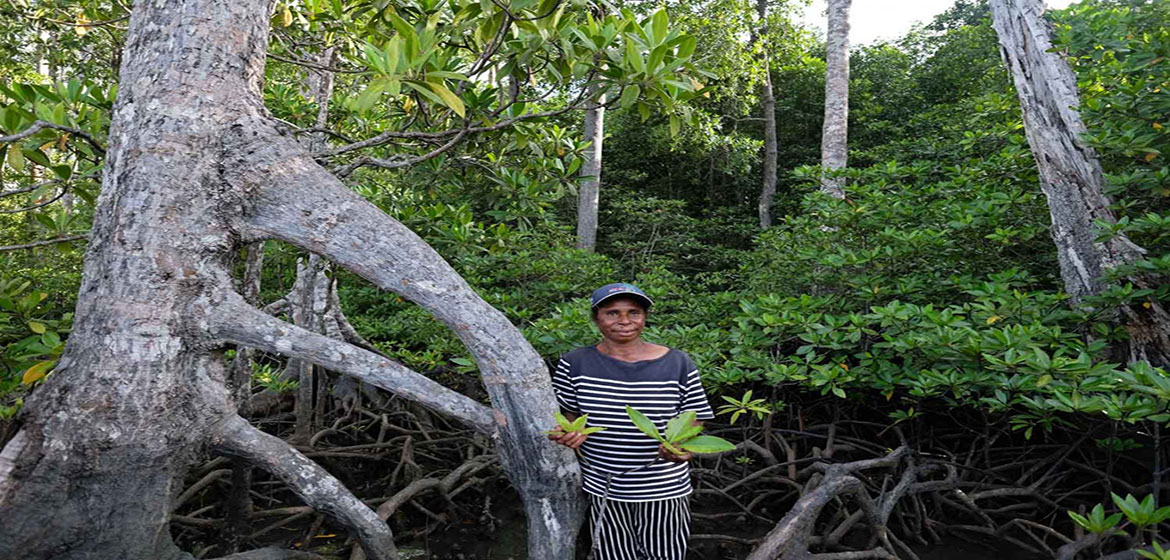By Kharishar Kahfi
Back in 2015, President Joko “Jokowi” Widodo kicked off the ambitious program of social forestry, in which his administration is expected to distribute 12.7 million hectares of forests to be managed by communities throuvarious schemes, including hutan adat (customary forests).
Customary forests are distributed to local neighborhoods that have been established as an indigenous community through a regional bylaw.
However, activists have been lambasting the government for its sluggish progress in recognizing and granting forest tenure to indigenous people despite a historic court ruling around six years ago mandating that the government recognize their tenure rights.
Attempting to answer such criticism, the government launched on Monday a map showing the current and indicative locations of customary forests across the archipelago, the purpose of which is to assist future measures to recognize indigenous people’s tenure rights.
The map, which has a scale of 1:2,000,000, the first of its kind, consists of around 472,981 ha of forest lands that have been verified by the ministry and are in proper condition to be turned into customary forests.
Of the total area, around 384,000 ha was designated as state forest areas, while the other 68,900 ha was nonforest estate. It also includes around 19,150 ha of customary forest area that has been established as of the end of April.
“By declaring lands as indicative locations of customary forests, we assist regional administrations in turning certain areas into such forest,” Environment and Forestry Minister Siti Nurbaya Bakar said on Monday.
“Apart from such purpose, we are also issuing the map in order to prevent other parties from misusing the land designated to become customary forests. Therefore, we can also contribute to solving land conflicts,” she added.
The ministry will update the map every three months to include new plots of land that have fulfilled requirements to be established as customary forests, the minister went on to say.
Bambang Supriyanto, the ministry’s director general of social forestry and environmental partnership, said the ministry would send letters to regional leaders containing instructions to accelerate the issuance of regulations on the establishment of customary forest areas.
Despite showing ambitious targets of distributing forest lands to indigenous communities, Indonesia has been criticized for being slow in granting forest tenure to local communities.
According to a study released by the Rights and Resources Initiative in September last year, the total amount of land designated for both categories only grew from 0.22 million hectares in 2002 to 0.79 million in 2017. The total area owned by local peoples only reached 0.01 million ha in the same year.
Since 2016, the Jokowi administration has granted 49 customary forest ownership certificates, resulting in the recognition of ownership of around 22,193 ha of customary forests.
Such action marked the first implementation of a Constitutional Court ruling in 2013 that removed customary forests from state control as well as formalizing local peoples’ ownership.
The total area delivered to the people, however, is still very small compared with a total of 4.3 million ha targeted by the President. A draft law on indigenous people has been stalled as the executive and legislative branches of the government have not made it a priority.
More than two-thirds of the forests in the country, representing at least 1.9 billion ha, are administered by governments, and at least 140 million ha, or 5.1 percent, are privately owned by individuals and firms.
R. Yando Zakaria, the founder of the Ethnographic Study Center for the Rights of Indigenous Peoples (PUSTAKA), said the ministry’s move to issue such a map should be appreciated.
However, he said the solution might be hindered by the country’s current legal framework that requires indigenous communities to be formally recognized through a regional bylaw, prior to accepting their tenurial right to customary forest. The deliberation of such a bylaw could take six months to two years as well as much money that is not necessarily owned by indigenous communities.
“Our constitution has already recognized these indigenous communities as Indonesian citizens. This bylaw mechanism is deemed unnecessary,” Yando said.
“If the government wants to be serious in solving these tenurial issues, it should fix the legal framework so it can allow local communities to be recognized without going through such a political mechanism.”
Source:



